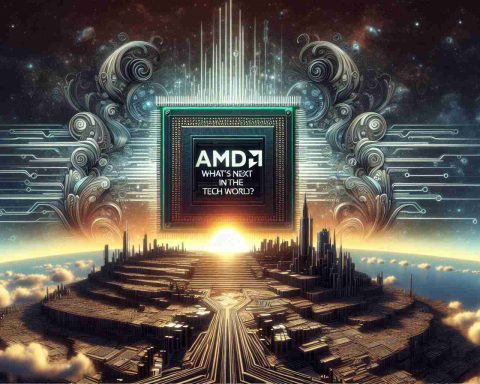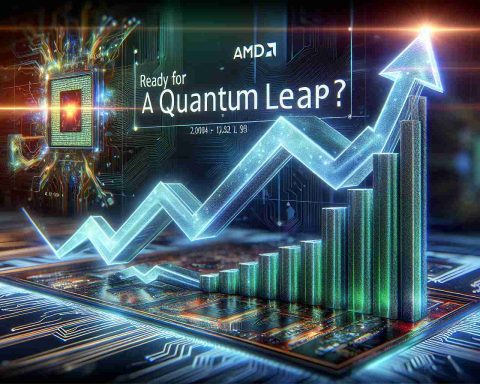- Nvidia’s stock recently dropped significantly due to competition fears from the new AI start-up, DeepSeek.
- The company’s market capitalisation has fallen by $600 billion amidst concerns about its valuation compared to its earnings.
- The current forward P/E ratio of 30.1 suggests potential for rebound, a historically favourable indicator.
- There are growing worries over Nvidia’s ability to maintain its competitive edge as new players enter the AI market.
- Investors should remain cautious, as fluctuations in earnings estimates could greatly influence Nvidia’s stock performance.
- Achieving a doubling of Nvidia’s value by 2025 may be overly ambitious given the current market dynamics.
Nvidia’s stock is making headlines, but not for the right reasons. Recently, the tech titan saw its shares tumble as whispers of a new AI competitor, DeepSeek, sent shockwaves through the financial world. This Chinese start-up unveiled a model similar to ChatGPT, claiming impressive capabilities while using less advanced Nvidia chip technology. Suddenly, investors are left questioning: Is Nvidia’s cutting-edge architecture still worth the premium?
The aftermath has been staggering. Nvidia’s share price plummeted, erasing a jaw-dropping $600 billion in market capitalisation. Though the decline feels catastrophic, it’s essential to look beyond the doom and gloom. As Nvidia’s stock fell, so did its valuation multiples, with the forward price-to-earnings (P/E) ratio settling at 30.1. While a year ago its market cap stood at a massive $1.5 trillion with a similar P/E, the stakes for 2025 are drastically altered.
Historically, a P/E around this level bodes well for rebounds. However, analysts are concerned, as Nvidia’s market cap has surged without a proportional earnings increase. The looming challenge is whether Nvidia can keep its edge against increasing competition in the AI sector.
The takeaway? While Nvidia continues to be a powerhouse, fluctuations in earnings estimates may drastically impact its stock trajectory. Investors should watch closely; while Nvidia’s prospects remain bright, doubling its value again in 2025 might be overly ambitious. Patience and insight are key as we navigate this thrilling yet unpredictable tech landscape.
Will Nvidia Bounce Back or Fall Further? Surprising Insights on the Future of AI and Stocks
The Current Landscape of Nvidia and AI Competitors
Nvidia’s recent stock turmoil stems from the competitive landscape of AI technologies. With the emergence of DeepSeek, a Chinese start-up boasting capabilities similar to ChatGPT yet built on less sophisticated chip technology, Nvidia faces an unprecedented challenge. This development raises serious questions about the sustainability of Nvidia’s market dominance.
Understanding Rich Results and Market Forecasts
Rich snippets and rich results help us decipher market trends with a more nuanced approach. Here’s what you should know about Nvidia and the broader AI market:
– Market Forecasts: Experts predict that by 2025, the AI sector could grow by more than 40% annually, significantly impacting companies like Nvidia, especially if competitors can provide equal or superior technology at lower costs.
– Pros and Cons:
– Pros: Nvidia dominates the GPU market, essential for AI training and deployment. Its partnerships with leading firms bolster its market position.
– Cons: The increasing competition from companies like DeepSeek and other emerging tech firms may dilute Nvidia’s market share and pricing power.
– Comparisons: When evaluating Nvidia against competitors like AMD and Intel, one must consider the technology stack and investment in R&D. Both AMD and Intel are ramping up their AI offerings, which could erode Nvidia’s lead in the sector.
Key Questions Answered
1. What impact will DeepSeek’s entrance have on Nvidia’s profitability?
– DeepSeek’s entry could lead to price wars, squeezing margins for Nvidia if performance equivalence is achieved at lower costs. Investors should closely monitor Nvidia’s response and how it adapts its pricing strategy.
2. Is Nvidia’s current valuation justified given potential competitive threats?
– With a P/E ratio of 30.1, Nvidia’s valuation appears steep, especially when compared to the average tech industry rate. Analysts suggest that if earnings do not increase in alignment with its previously soaring market cap, the current valuation may not hold.
3. What should investors consider when forecasting Nvidia’s future stock performance?
– Key considerations involve Nvidia’s ability to innovate, the strength of its brand partnerships, and the pace at which competitors can ramp up their offerings. Ongoing evaluation of AI market trends will be crucial for making informed investment decisions.
Emerging Trends and Innovations
– Innovations: Nvidia continues to invest heavily in AI research and development, particularly in areas like autonomous vehicles and advanced data centres. This commitment positions the company to leverage its existing technology while potentially entering new markets.
– Sustainability: With growing scrutiny on energy consumption from data centres, Nvidia’s efforts toward developing more power-efficient GPUs could enhance its appeal to environmentally-conscious investors.
Conclusion
Nvidia remains a central player in the AI landscape, poised between opportunity and competition. As the technology sector evolves at breakneck speed, continuous innovation will be vital for maintaining its competitive edge. Investors must remain vigilant and informed about both Nvidia’s capabilities and the shifting dynamics in the industry.
For more on Nvidia and the tech sector, check out the main resources available at nvidia.com.
























